Space
Inventing woven satellites for earth observation
Published
1 year agoon
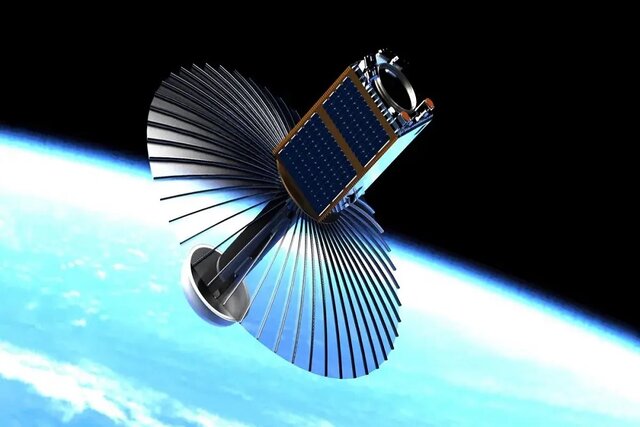

Inventing woven satellites for earth observation. Next year, Britain plans to launch several earth-observing satellites with umbrella-like antennae that are linked together like knitting.
Inventing woven satellites for earth observation
British scientists are now working on the launch of the first such satellites to study the Earth, which is expected within the next year.
These new satellites, called CarbSar, use radar technology to observe clouds and Earth around the clock.
These satellites are being developed by two UK-based companies, Surrey Satellite Technology Limited, and Oxford Space Systems.
An antenna that opens like an umbrella in space
Surrey Satellite emphasizes that these innovative satellites offer high-resolution imaging capabilities day and night and in all weather conditions.
As mentioned, these new satellites use radar technology to look at the clouds and observe the Earth throughout the day and night, and their antenna is designed in such a way that the satellite can easily withstand the harsh space environment and solar radiation. also, be safe.
Read More: NASA takes laser communications to the moon
Tied with a tungsten net, the radar antenna is easily foldable during launch and can unfold into a large umbrella once in orbit. When fully opened it creates a parabolic shape to reflect high-frequency radio signals.
The antenna mesh is made of gold-plated titanium thread attached to a set of carbon rods. High-performance gold wires also enable the transmission and reception of radio signals in the circuit, while the gold coating also makes the antenna more resistant to the harsh environment of space.
It should be mentioned that the thread connecting the radar antenna is woven using special and advanced knitting machines.
Application in earth observation
This antenna with a width of 3 meters can be installed on a 150 kg spacecraft. The broadband radar instrument on this satellite allows it to take clear optical images of the Earth’s surface.
Synthetic Aperture Radar (SAR) imagery is suitable for numerous types of observations, including those related to commercial, civil, and security applications, including defense and security, maritime, disaster response, environmental, and infrastructure.
The lifetime of this mission is expected to be about five years.
The creators of these satellites say that CarbSAR captures high-resolution SAR images during the day or night and in any weather conditions, providing reliable information for a wide range of applications.
This small satellite operates at a high frequency, provides high-resolution imaging in all weather conditions, and requires a low budget, so it is ideal for future space applications.
If this earth-observation technology proves its worth in a launch next year, it could pave the way for larger antennas that can be easily folded and fit easily inside rockets.
In the end, it should be said that these satellites will most likely be launched from a rocket on the soil of the United States


You may like
-

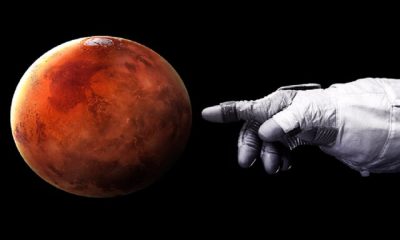


What are the obstacles on the way for humans to reach Mars?
-

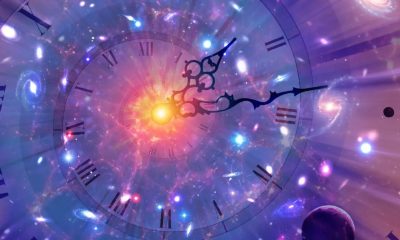


History of the world; From the Big Bang to the creation of the planet Earth
-

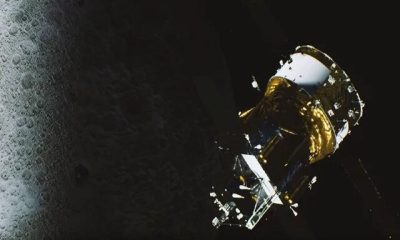


A mystery that is solved by the China’s Chang’e-6 probe!
-

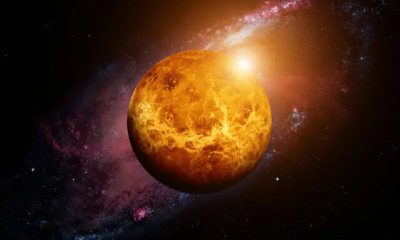


Discover a new answer to the ancient mystery of a Venus!
-

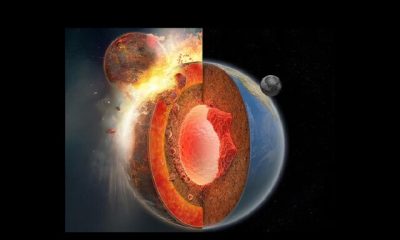


Discovering new evidence of the impact that formed the Earth’s moon
-

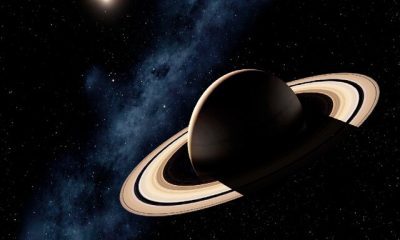


Maybe alien life is hidden in the rings of Saturn or Jupiter
Space
What are the obstacles on the way for humans to reach Mars?
Published
4 hours agoon
15/05/2024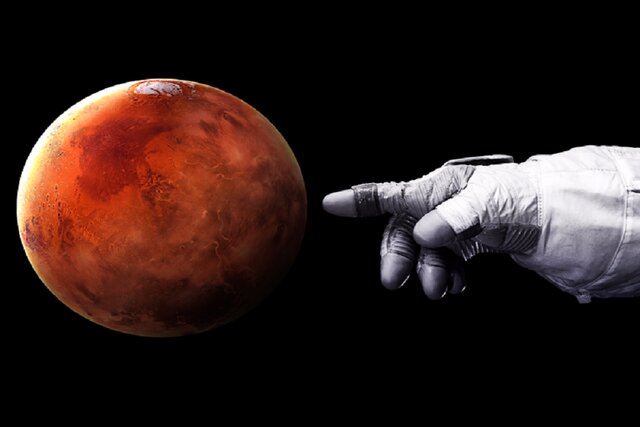

Sending the first humans to Mars has not only been a dream for countless generations, but also dates back to the early modern era. Also, one of the topics of the space age is the planning of such missions, and it is considered an integral part of the current vision for the future of space exploration, but this long-standing dream has not yet been realized.
What are the obstacles on the way for humans to reach Mars?
In the last 20 years, the public has heard claims that NASA will send the first humans to Mars by the early 2030s. First the moon, then to Mars! This is the plan NASA seemed to be sticking to for a while.
According to IA, in recent years, other players, including the China National Space Agency (CNSA) and Elon Musk’s commercial space giant, SpaceX, have joined the “race for Mars“. According to several sources, China, like NASA, plans to build infrastructure on the moon that will help the country send its first astronauts to Mars as early as 2033.
SpaceX’s plans are even more ambitious, with missions planned for the late 2020s and plans to build a self-sufficient city on Mars before the end of the decade. Unfortunately, many naysayers have said that reaching Mars by 2033 or sooner is unrealistic.
There have also been numerous delays along the way, showing how the entire Moon-to-Mars mission could fall behind its planned timeline.
2040 may be a more likely year for a manned mission to the surface of Mars, according to statements issued last summer by Deputy Administrator Jim Reuter. While delays are common in spaceflight, a seven-year delay seems significant and raises questions.
For example, why does such a mission take so long? And what would it take to send the first humans to Mars?
Answering these questions requires recalling memories.
The journey begins
Efforts to carry out missions to Mars began in 2004 with the announcement of a project called Vision for Space Exploration (VSE) by NASA. This vision came in response to the Space Shuttle Columbia disaster, the state of human spaceflight at NASA, and a desire to rekindle public interest in space exploration.
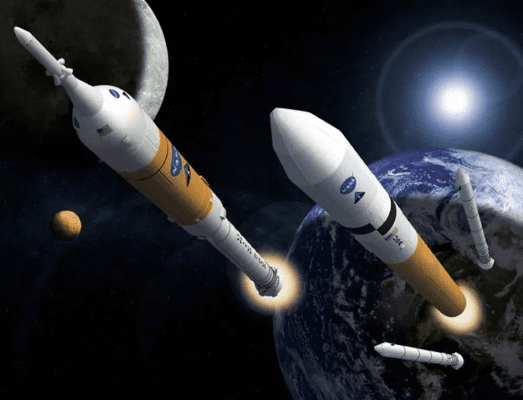

The project’s specific goals included completing the International Space Station (ISS), retiring the Space Shuttle by 2010, and creating a new fleet of heavy launch vehicles that would enable manned missions to the Moon, Mars, and beyond.
The plan included a series of robotic missions to the Moon to prepare and support future human exploration activities that began in 2008.
The plan also supports the use of lunar exploration, science, and resources to develop the technologies and systems necessary to support sustainable human space exploration to Mars and other destinations.
Meanwhile, NASA will resume sending robotic missions to Mars to search for evidence of life and prepare for the eventual arrival of manned missions. This led to the formation of NASA’s Mars Exploration Rover (MER) program, which consisted of the Spirit and Opportunity rovers and the Curiosity and Perseverance rovers.
Following this, the NASA Authorization Act of 2005 officially launched the Constellation Program.
The program called for a new group of launch vehicles, including a crew launch vehicle (CLV) and a cargo launch vehicle (CaLV), which led to the design of the Ares I and Ares V rockets.
Other vehicles included the Crew Exploration Vehicle (CEV) and the Lunar Surface Access Module (LSAM).
NASA planned to use Eriz 1 and 5 back-to-back to send astronauts to the Moon and Mars. The crew was to be launched using a two-stage Ariz-1 rocket capable of delivering 56,000 pounds (25,400 kg) to low Earth orbit (LEO). The payload was sent separately on Ariz 5, which was capable of sending 88,000 kg into low Earth orbit. This program came to fruition in 2009 when NASA completed the Launch Stop System (LAS) and the first stage of the Ariz 1 rocket. The second one was successfully tested on October 28 of the same year.
Unfortunately, the Constellation program was canceled in 2010 due to the global financial crisis known as the “Great Recession” that began in 2007-2008. Almost a year later, the Obama administration signed off on the Mission to Mars.
Details and goals of the program were published in the NASA Authorization Act of 2010 and the US National Space Policy of the same year. NASA’s priorities in this matter are summarized as follows:
Our next step is deep space, where NASA will send a robotic mission to capture and guide an asteroid into lunar orbit. Astronauts aboard the Orion spacecraft will explore the asteroid in the 2020s and return to Earth with samples. This experience in human spaceflight beyond low-Earth orbit will help NASA test new systems and capabilities, such as solar electric propulsion.
Beginning in fiscal year 2018, NASA’s powerful Space Launch System rocket will enable these missions to test new capabilities. Human missions to Mars will rely on Orion, an evolved version of the Space Launch System rocket that will be the most powerful launcher ever to fly.
In many ways, “Journey to Mars” picked up where the Constellation program left off.
While the Ariz 1 rocket and lunar lander were discarded, the Ariz 5 launcher and crewed exploration spacecraft were retained and became the basis for the Space Launch System (SLS) and the Orion spacecraft.
Timelines were also updated, with missions to Mars planned for the early 2030s.


The proposed journey will include three phases and 32 launches of the Space Launch System between 2018 and 2030. These missions send all the necessary components to space between the Earth and the Moon and then to space near Mars before landing the crew on the surface of Mars.
Phase one, called the Earth-based phase, will focus on further long-term studies on the International Space Station until 2024 and testing the Space Launch System and Orion spacecraft. This included Exploration Mission 1 (EM-1) in 2018, the first flight of the Space Launch System, and the second unmanned test flight of Orion.
As with the Constellation program, NASA also planned to launch an Asteroid Redirection Mission (ARM) in 2020, in which a robotic spacecraft would rendezvous with a near-Earth asteroid and pull it into lunar orbit.
Exploration Mission 2 (EM-2) will include a manned flyby of the Moon and asteroid ARM between 2021 and 2023. At this point, NASA moves to Phase Two, shifting the focus from Earth to the space between the Earth and the Moon. The multiple launches of the space launch system will bring the important components of the mission to the lunar surface and orbit at this stage.
Since 2012, these elements have included the lunar gateway known as the Deep Space Habitat, an orbiting space station consisting of a Power and Propulsion Element (PPE), a Habitat and Logistics Base (HALO), a refueling supply system, and infrastructure. and has a communication module (ESPRIT), an international habitation module (I-Hab), and a reusable lunar lander.
Other elements include the Artemis Base Camp, which consists of a lunar base surface habitat, a habitable mobile platform, a Lunar Ground Vehicle (LTV), and a Deep Space Vehicle (DST). The spacecraft will integrate with Orion to transport a crew of up to four to Mars and other deep space destinations.
In the early 2030s, phase three (ground-independent) will begin, which will include essential elements delivered to Mars by a deep space vehicle. This second space station will be equipped with a reusable Mars lander that will allow the crew to perform scientific operations on the surface and then return to orbit.
A road map is formed
In 2017, NASA’s long-term vision to return astronauts to the Moon and Mars began. According to the National Aeronautics and Space Administration’s 2017 Transfer Authorization Act, NASA’s priorities for the Moon to Mars program were determined.
These priorities included continued development of the Space Launch System, Orion, the Lunar Gateway, and other critical mission elements. The bill also directed NASA to scrap the asteroid reorientation mission in favor of something more cost-effective. Other priorities included expanding the US commitment to the ISS and restoring domestic launch capability through the Commercial Orbital Transportation Service (COTS) and the Commercial Crew Program (CCP).
According to their timeline, the construction of the Moongate space station will be completed by 2028. The first manned missions to Mars will be launched from the Moon Gate in 2033. The crew will spend up to a year conducting science operations, then make their return trip to Earth.


The spacecraft and crew will then spend 6 to 9 months en route, returning to the lunar gateway and landing on Earth with the Orion capsule. Subsequent missions are carried out once every 26 months. These missions will lead to the establishment of a long-term habitat on Mars, allowing for return visits. It could also deliver the first Mars sample to Earth, similar to how the Apollo astronauts returned moon rocks for analysis.
Read more: Can humans endure the psychological torment of living on Mars?
However, by 2019, NASA was forced to reevaluate its priorities and long-term goals as the Trump administration inaugurated a new program.
As you can see, NASA’s long-term vision for the first manned missions to Mars has evolved since its inception 20 years ago, and even in its early stages, there were doubts that the timelines and commitments were realistic. With all these challenges, the most important pressure factors had not yet arrived. You can read these factors in the second part of this report.
Space
History of the world; From the Big Bang to the creation of the planet Earth
Published
2 days agoon
13/05/2024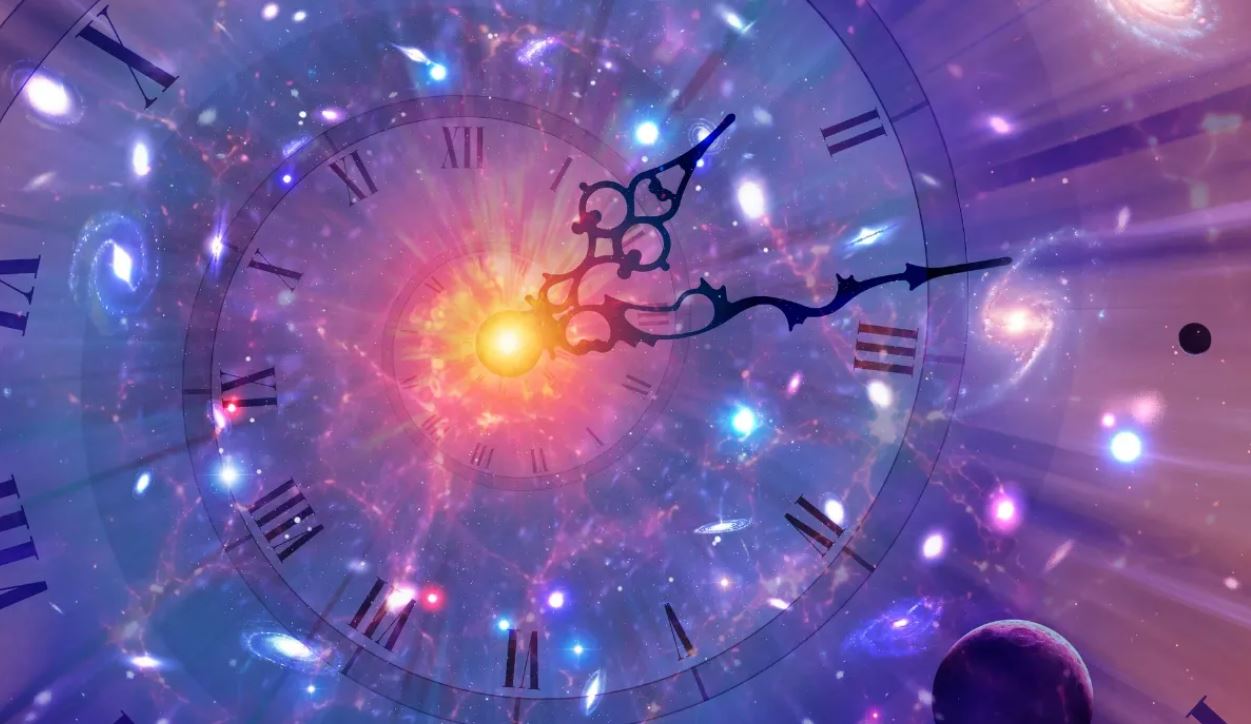

History of the world; From the Big Bang to the creation of the planet Earth
Since its launch in 2021, the James Webb Space Telescope has sent us spectacular images of the universe’s deep field. This telescope revealed fine details like a galaxy with an age of 13.1 billion. Such distant objects may not be visually impressive, appearing as fuzzy red blobs in images, but they can provide a fascinating glimpse into the universe’s infancy.
Space and time are intertwined. Light travels at a constant speed, so the images captured by telescopes like James Webb’s are actually images of the universe from millions or even billions of years ago. The higher the sensitivity and accuracy of a telescope, the more distant objects it can observe and thus display more distant times. As the most powerful telescope ever launched, the James Webb Space Telescope (JWST) is extremely sensitive. This telescope can theoretically see objects within 100 million years since the formation of the universe.
-
The first moments
-
Initial plasma
-
The world becomes transparent
-
Cosmic Dark Age
-
The first habitable age
-
The first lights in the dark
-
Blooming cosmos with stars
-
Star seeds
-
The oldest known star
-
The oldest known planet
-
The formation of galaxies
-
Large-scale structures of the universe
-
Collision of galaxies
-
Massive black holes
-
The formation of the Milky Way disc
-
Overcoming dark energy
-
The birth of the sun
-
The formation of the earth
-
The first forms of life
-
Extraterrestrial life and alien civilizations
There are still many unknowns about the history of the universe, but telescopes like Webb’s can unravel these mysteries and reveal unprecedented detail.
History of the world
The first moments
 The universe was born about 13.8 billion years ago from the Big Bang.
The universe was born about 13.8 billion years ago from the Big Bang.
The entire universe was created from an ancient and vast explosion that continues to this day. This spark , called the Big Bang, happened nearly 13.8 billion years ago. The Big Bang is the best hypothesis ever proposed for the existence of the universe. Although there is still no way to directly observe the Big Bang, this theory is well established and has been confirmed by many scientists over the past few decades.
In the first moments of the universe, a fraction of a second after the Big Bang, everything was inside a singularity, which is an infinitesimally small point of space with a very strange and high density that encompasses everything. In a few moments after the birth of the universe, the world was in an era known as Planck’s age. In this era, the whole world was so small that space and time had no meaning. Then, in less than a second, the universe entered a phase known as cosmic inflation, and for a moment, it expanded greatly. The infant universe consisted of a hot soup of subatomic particles and radiation, preventing any kind of structure from forming.
Initial plasma
 The universe was initially filled with turbid, hot plasma.
The universe was initially filled with turbid, hot plasma.
The early universe was a highly viscous place filled with turbid plasma for several thousand years. This murky plasma was a mass of subatomic particles that were too hot to contract into atoms. The lack of transparency of the early world makes it impossible to see the events of that time; However, the early chapters of the universe’s history are of interest to many cosmologists because they represent a stage for the existence of everything.
Scientists believe that the early universe was filled with equal amounts of matter and antimatter, which eventually annihilated each other, leaving only a small amount of matter in the present universe. The question of why one of them was more remains a mystery and physicists are still trying to answer this question.
Eventually, the universe cooled and atoms and then strange molecules began to form. The first molecule that was formed in the world was made of only two elements, hydrogen and helium. These molecules finally made a compound called helium hydride. This chemical reaction actually created a helium compound that looks like it shouldn’t exist.
The world becomes transparent
 The world became transparent after 300 thousand years.
The world became transparent after 300 thousand years.
On its 300,000 birthday, the world entered an era known as the age of recombination. It was during this period that atoms began to form, although the word “recombination” is a bit of a misnomer because it was during this period that everything was combined together for the first time. As the universe cooled enough, matter began to form atoms, and the universe became transparent for the first time. This transparency allowed the light left over from the Big Bang to spread throughout the universe.
The ancient Big Bang radiation marks the edge of the visible universe and can still be observed. As the universe continues to expand, the light in it is stretched, which astronomers witness in the form of the redshift phenomenon. The older the light of an object, the more it is stretched and moves to the red side of the spectrum like infrared and finally to longer wavelengths.
The initial light of the birth of the world is the most stretched light and the human eye cannot observe it. This light can be seen in all directions today as the cosmic background radiation (CMB). As seen in the image above, some speckled areas show slight fluctuations left over from cosmic inflation. These faint background rays are the last reflections of the birth of the universe.
Cosmic Dark Age
 The world had no stars in the dark ages.
The world had no stars in the dark ages.
With the universe filled with atoms, light was finally able to move freely in open space. However, there was nothing in the universe capable of producing light. In fact, this age of the world is known as the age of cosmic darkness. In this period, the stars were not yet born and the space was full of silence and infinite darkness. The universe was in its infancy and there was nothing but dark matter with neutral helium and hydrogen, But it was in this darkness that the materials of the world gradually joined each other.
Finally, with the formation of the first stars, the world entered an era known as the Bazion, and the first stars shone. They emitted intense ultraviolet light in the dark and eventually removed the electrons from the new atoms; But even though the stars were shining for the first time in the universe, their light could not travel very far. Because the entire space was filled with a fog of hydrogen gas and blocked the light of the first stars. After some time, the starlight traveled further distances and reached us today.
The first habitable age
 According to calculations, the first habitable age started in 10-17 million years of the world.
According to calculations, the first habitable age started in 10-17 million years of the world.
According to human earth standards, any place with liquid water can be classified as habitable. As the early Earth cooled, the surprising truth was revealed that the entire universe was once at a habitable temperature. According to an article published in the International Journal of Astrophysics, this period is called the early habitable age. Based on this hypothesis, the question arises as to what exactly happened in a world where life theoretically existed everywhere. According to calculations, this cosmic age corresponds to the time when the universe was still 10 to 17 million years old.
Of course, scientists have differences in this hypothesis. According to an article in Nature that argues against this idea, life requires a hot-to-cold energy flow and cannot exist in a uniformly warm universe. Furthermore, at this early age it is not known whether the universe had stars or planets, or even oxygen to produce water. However, this hypothesis cannot be completely rejected. The first planets were probably formed in the first few billion years of the universe; So the hypothesis of an early habitable age is little more than a fascinating thought experiment.
History of the world
The first lights in the dark
 The first stars of the universe were composed of light elements.
The first stars of the universe were composed of light elements.
The first stars of the universe were formed from the virgin material left over from the Big Bang and were the cause of the formation of the first heavy elements of the universe. These stars, which lacked elements heavier than helium, are known as population 3 stars (confusingly named stellar populations in the wrong order). Since these stars were responsible for the formation of the heavy elements of the universe, they must have existed at some point in history. These objects are expected to have formed between 100 million and 250 million years after the Big Bang.
According to the models, Population 3 stars were very massive and short-lived by today’s stellar standards. The lifetime of some of these stars reached only 2 million years, which is a long time from the human point of view; But on a stellar scale, it’s like a blink of an eye. When these stars ended their lives, they likely perished in unstable binary supernova explosions, the most violent type of stellar explosion in the universe. Although no stars belonging to this group have been observed so far, perhaps this trend will change with powerful instruments such as the James Webb Space Telescope.
Blooming cosmos with stars
 Some stars of the Milky Way date back to 11 to 13 billion years ago.
Some stars of the Milky Way date back to 11 to 13 billion years ago.
We live in a season of the world known as the age of star formation. This age is the beginning of the stars shining in the dark and is actually the modern age of the world, in which the cosmic matter turns into stars, planets and galaxies. According to scientists, the era of star formation began approximately one million years after the Big Bang and will continue until the universe is 100 trillion years old. Until the very distant future, the birth, life and death of stars in the universe and the fusion of hydrogen into heavier elements will continue until hydrogen disappears completely.
Although stars are actively forming in the universe, there is a wide range from newly born stars to very old stars. Stars can live for billions of years. Red dwarfs, the smallest and most populous stars in the universe, live so long that their deaths have not been recorded until now because the universe is not old enough. Astronomers have also observed very old stars in the universe, some of which date back to the earliest days of the Milky Way, between 11 and 13 billion years ago. Stars like this have been observed for most of the history of the universe.
Star seeds
 Nebulae are breeding grounds for the formation of new stars
Nebulae are breeding grounds for the formation of new stars
By weight, most of Earth is made up of chemical elements heavier than helium, which are made in the cores of stars. This process is known as nucleation. During the lifetime of a star, nuclear reactions combine light elements and produce heavier elements. In this way, elements such as carbon, oxygen, silicon, sulfur and iron are formed in the hearts of stars. When stars run out of fuel, they throw the elements they made back into the universe.
Stars fill the galaxy with elements by their birth and death over billions of years. Carbon, oxygen, and nitrogen are among the most abundant elements made by smaller stars. As these stars die, their outer layers form a stellar nebula. From this example, we can refer to the Southern Ring Nebula, whose image was published by the James Webb telescope.
The life of the biggest stars also ends in a supernova explosion. These explosions not only fill galaxies with heavy elements such as iron, but their shock waves can be the basis for the birth of new stars.
History of the world
The oldest known star
 The oldest star in the universe was formed only 100 million years after the Big Bang
The oldest star in the universe was formed only 100 million years after the Big Bang
The hunt for the oldest stars in the universe is one of the fascinating fields of astronomy that can help scientists understand the early days of the universe. The oldest star ever discovered is HD 140283. The star is so old that the first estimates of its age are older than the universe itself. However, this effect is an illusion caused by the uncertainty in the estimates. Therefore, measuring the age of a star is not an easy task.
According to another research in the Journal of Astronomy and Astrophysics, the age of HD 140283 was estimated to be almost the same as the age of the universe, i.e. 13.7 billion years. In other words, this star was probably born a hundred million years after the Big Bang, and thus it is one of the first generation of stars that were born in the world. This star is metal-poor, or in other words, has a small number of chemical elements heavier than helium, and thus it is placed in the category of population 2 stars. Such stars are among the oldest objects that have ever shone in the universe. Based on the ratio of chemical elements, these stars are survivors of early stars from the early days of the universe.
The oldest known planet
 The oldest planet in the world is nearly 12.7 billion years old.
The oldest planet in the world is nearly 12.7 billion years old.
No one knows exactly when the first planets formed, but they seem to be able to outlive stars. The oldest known planet orbits two dead stars, one of which is a pulsar and the other a white dwarf. Both stars are stellar wrecks that have run out of fuel and have released much of their chemical material into their galaxy. The mentioned pulsar is called PSR B1620 and the planet located in its orbit is known by the nickname Methuselah. This planet, which is a kind of gas giant, is not unlike the planet Jupiter.
According to estimates, the lifespan of Methuselah reaches 12.7 billion years, but this age is not exact. There is no good way to estimate the age of planets, so this estimate is based on other stars in the Methuselah cluster. Globular clusters, such as the Methuselah host cluster, are full of stars that formed at the same time.
According to the research of Science magazine, the existence of the ancient planet Methuselah offers interesting hints about the time of formation of the oldest planets. If the estimates are correct and Methuselah is really 12.7 billion years old, we can say that the planets were formed earlier than we think. In other words, Methuselah may not be the only ancient planet in our galaxy.
The formation of galaxies
 Galaxies usually come together in several clusters
Galaxies usually come together in several clusters
When the universe was only 200 million years old, the first galaxies were formed. The discovery initially surprised astronomers because they thought galaxies formed much later. Early galaxies were not similar to today’s massive galaxies. Rather, they were shapeless clouds of irregular gas and dust. These galaxies, accompanied by a wave of star birth, eventually became the massive galaxies that fill the universe today. It seems that the Milky Way galaxy was formed approximately 13.6 billion years ago. Our galaxy was then an unrecognizable mass of stars, not unlike the present spiral.
The oldest galaxy ever discovered was formed 300 million years after the Big Bang. This galaxy is called HD1 and the James Webb telescope played an important role in determining its age. HD1, if confirmed, would be the oldest galaxy ever seen by astronomers and could offer fascinating insights into the formation of the universe’s first galaxies. The formation of galaxies is still a mysterious research field full of unanswered questions. Helping to solve these questions will be one of the main goals of the James Webb telescope.
Large-scale structures of the universe
 Galaxies are held together by gravity and form large-scale cosmic structures
Galaxies are held together by gravity and form large-scale cosmic structures
Much of the world seems to be an empty void, But the universe has complex structures on very large scales. The universe is covered with an array of dark matter filaments that form a web-like structure. This network of dark matter, called large-scale structure, shapes the universe and causes galaxies to fall into regular patterns. The gravity of the large-scale structure causes both dark and visible matter to lie next to each other. By examining this structure, we can find signs of the youth of the world.
Deep background images, such as the James Webb Telescope image, can reveal how galaxies fit together. These structures are actually the largest visible structures or galaxy strings in the universe, held together by gravity. In addition, the structures are not random but have an order that still fascinates researchers. Galaxies and large galaxy clusters appear to be evenly spaced in the galactic strings, resembling a pearl necklace. There are still many uncertainties about large-scale structures.
Collision of galaxies
 Some galaxies collide and form larger galaxies.
Some galaxies collide and form larger galaxies.
Gravity pulls everything in the universe together, and the heavier the mass, the greater this attraction. Galaxies are among the heaviest objects in the universe, whose formation and evolution are still a matter of discussion and their evolution is strongly influenced by their interaction with each other.
Galaxies usually tend to form groups or clusters that come together due to gravity and start interacting when they are close to each other. The gravitational pull of galaxies leads to the creation of lethal forces. In the most dramatic examples, galaxies can collide and their merger may take billions of years.
Galactic collisions can lead to the formation of new stars; Because the change of gravitational forces causes disturbances on huge scales. Some stars are ejected into the dark intergalactic space, while others are trapped by the gravity of supermassive black holes at the center of colliding galaxies. As the galaxies merge, their spiral arms are eventually destroyed, and the two galaxies eventually become one massive elliptical galaxy. In this way, some of the largest galaxies in the universe are formed. Some galaxies also grow by absorbing smaller galaxies. According to some evidence, the Milky Way has experienced such a collision in the past, and its signs can be seen in the form of remnants of galaxies that it has absorbed in the past.
History of the world
Massive black holes
 Quasars are caused by the feeding of the black hole from the surrounding matter.
Quasars are caused by the feeding of the black hole from the surrounding matter.
The largest galaxies, such as the Milky Way, have a supermassive black hole at their center; Although how these black holes formed is still a mystery, it is clear that they are very old. The European Space Agency has released an image of an ancient galaxy known as UDFj-39546284, which appears to be a small red dot in the image. This spot is actually the oldest quasar observed by astronomers and dates back to 380 million years after the Big Bang.
Quasars are among the brightest objects in the world, which are created by the feeding of the supermassive black hole at the center of a galaxy from the surrounding material. The big question here is how these black holes have reached these dimensions at a high speed. According to a study published in the journal Nature, supermassive black holes appear to have formed suddenly from turbulent cold gas in the early universe. In the right conditions, black holes were formed with great intensity and suddenly as a result of the collapse of streams of initial materials grew to dimensions exceeding 40,000 times the mass of the Sun.
The formation of the Milky Way disc
 In the first 3 billion years of its existence, the Milky Way had no spiral arm.
In the first 3 billion years of its existence, the Milky Way had no spiral arm.
Today, the Milky Way is a spiral galaxy, but it hasn’t always been this way. The spiral galaxy formed in a galactic disk, but the Milky Way disk formed about ten billion years ago. This means that our galaxy spent its first three billion years without a disk and therefore had no spiral arm.
The disk of a spiral galaxy contains a large part of the material of that galaxy. In such galaxies, star birth often occurs in spiral arms, as stars are formed from vast clouds of gas and dust slowly swirling around the galactic core. How and why spiral arms and disks are formed is still not completely clear, although this phenomenon has been observed frequently in the sky.
Some galactic disks appear to be very old. The oldest galactic disk ever seen is the Wolf disk. This old spiral galaxy dates back to when the universe was only 1.5 billion years old. Of course, due to the distance of this galaxy, we have no information about its new appearance.
Overcoming dark energy
 Mysterious dark energy is responsible for accelerating the expansion of the universe.
Mysterious dark energy is responsible for accelerating the expansion of the universe.
One of the milestones in world history can be related to dark energy; The mysterious force that controls the expansion of the universe. No one knows exactly what dark energy is, although astronomers can measure its effects. Until a long time ago, the universe was in a tug-of-war between the force of gravity and the repulsive force of dark energy. At some point around 5-6 billion years ago, dark energy won the race. As the universe continued to expand, dark energy overcame gravity and accelerated the expansion of the universe.
The effect of dark energy on the future of the universe is still unclear. Without knowing more about dark energy or how it works, there’s no way to know. Although dark energy appears to make up a large part of the universe, its specifics are still shrouded in mystery. According to a possibility, this energy can be one of the inherent characteristics of space itself.
The birth of the sun
 The sun was formed about 4.6 billion years ago from a cloud of gas and dust.
The sun was formed about 4.6 billion years ago from a cloud of gas and dust.
The sun is almost a third of the entire universe. This star was formed about 4.6 billion years ago. With the formation of the sun, the clouds of gas and dust around it formed planets such as Earth and many moons of the solar system.
The sun is one of the population’s 1 stars. Such stars are among the newest stars in the universe and are rich in heavy elements, examples of which can be found on Earth. According to a hypothesis, the shock wave resulting from a supernova was the cause of the formation of the solar system from vast dust clouds. The traces of this supernova exist in the form of radioactive isotopes in the entire solar system; So a star died so we could live.
The formation of the earth
 Earth was formed from the joining of asteroids.
Earth was formed from the joining of asteroids.
According to scientists, the story of the formation of the earth goes back to 4.6 billion years ago. Our planet formed in a disk-like cloud of gas and dust around the primordial Sun. Inside this disk, gas and dust particles of different sizes were rotating at different speeds in the orbit of the sun and in this way, they collided and stuck to each other. Finally, the tiny particles turned into huge rock fragments and objects called asteroids, whose diameters ranged from one to hundreds of kilometers.
Asteroids eventually gained enough gravity to clear their orbits and attract other bodies through collisions, becoming larger bodies several thousand kilometers in diameter and forming planets.
The first forms of life
 The first life on earth dates back to 3.7 billion years ago.
The first life on earth dates back to 3.7 billion years ago.
Life on Earth is the only life we know of in the entire universe. Life first appeared about 3.7 billion years ago, shortly after the formation of the Earth itself. Thus known life is roughly a quarter of the age of the universe, although the complex life that would eventually become humans is much more recent.
Carbon is an essential element for life and appears to have been unavailable until 1.5 billion years after the Big Bang. For this reason, it is still not possible to estimate with certainty the first form of life in the entire universe. Maybe other parts of the world have different chemistry or different elements than life on Earth.
Extraterrestrial life and alien civilizations
 Life in other parts of the world may be chemically different from life on Earth.
Life in other parts of the world may be chemically different from life on Earth.
To quote the late astronomer Carl Sagan, “We are a way of knowing the world.” Humans are part of the world like the most distant stars or galaxies. In other words, at least a part of the world is capable of thinking and observing other parts. The oldest early humans appeared on earth approximately 2.4 million years ago; This means that humans and our direct ancestors only existed in 0.02% of the entire history of the world. On a cosmic scale, it seems like we were born just yesterday. However, humans may not be the only civilization in the world.
The question about the existence of other civilizations in the galaxy has a long history. Half of all Sun-like stars could host habitable universes; Therefore, there is no shortage for the formation of civilizations. According to a relatively conservative study, there should be at least 36 space civilizations capable of communicating in the Milky Way. According to another research, there are more than 42 thousand civilizations in the Milky Way. Currently, there is no way to find out the existence of these civilizations. With more accurate telescopes, we may be able to find evidence that we are not alone in this infinite universe.
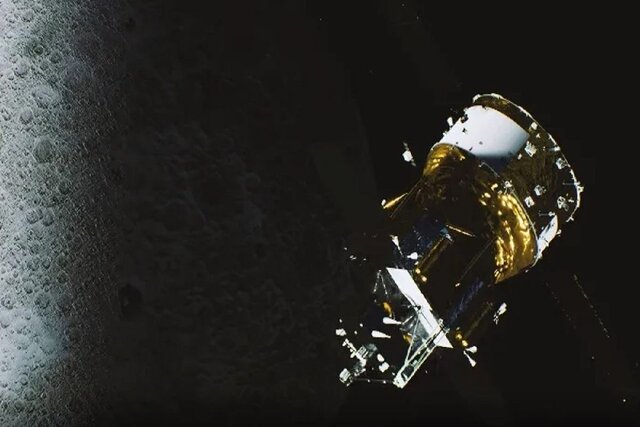

China’s Chang’e-6 probe, launched to retrieve samples from the far side of the moon, has a big mystery to solve about Earth’s moon.
A mystery that is solved by the China’s Chang’e-6 probe!
China’s Chang’e-6 mission, which is currently on its way to bring back samples from the far side of the moon, will help investigate theories about why the far and near sides of the moon differ.
According to Space, Changi 6 is expected to land in early June in the Apollo impact basin, which is located within the larger South Pole–Aitken basin.
The Aitken Antarctic Basin is the largest collisional feature of its kind in the solar system, with an area of 2,400 x 2,050 km. This basin was formed about 4.3 billion years ago, which is very early in the history of the solar system.
Although the Apollo Basin is younger, it is the largest impact site within the Aitken Antarctic Basin. Apollo has a two-ring structure, the inner ring consists of mountain peaks with a diameter of 247 km, and the outer ring is about 492 km wide.
The Chang’e-6 mission was launched on May 3 from the Wenchang Satellite Launch Center in Hainan Province, located in southern China, and went to the moon on a Long March 5 rocket.
As the first mission to bring samples from the far side of the moon, Changi 6 is supposed to bring back about two kilograms of precious lunar material. The far side of the moon is a relatively unknown place. The fact that we can’t see the far side of the moon from Earth adds to its mystery. For the first time, the Soviet Union’s “Luna 3” spacecraft photographed the far side of the moon in 1959.
With that photo, scientists around the world were amazed to see how different the far side of the moon is from the side we are familiar with. Although both the far and near sides have many craters, the near side also contains vast volcanic plains called “lunar maria” that cover about 31% of it.
The far side of the moon is opposite and volcanic plains cover only about 1% of it.
So how did the far side and the near side become so different? It seems that the thickness of the shell is one of the factors. In fact, NASA’s GRAIL mission found in 2011 that the far-side crust is on average 20 kilometers thicker than the near-side crust.
The reason for this is thought to be that our moon was formed from debris from the impact of a Mars-sized planet on Earth about 4.5 billion years ago. As the Moon formed from that debris, it became tidally locked. This means that it always shows the face of our planet.
The surface of the earth was completely melted by that big impact and it radiated heat towards the near side of the moon and kept itself molten for a longer time. Scientists believe that the rock vaporizes on the near side and condenses on the colder side, thickening the crust on the far side.
Hong Kong University (HKU) researcher Yuqi Qian is one of the lead researchers on a new project that shows that a sample to be returned to Earth by Chang’e 6 could test this theory. Keyan said: Basic findings show that the difference in crustal thickness between the near and far sides may be the main cause of the difference in the moon’s volcanism.
In places like most distant parts where the Moon’s crust is thick, magma can’t seep through fractures to the surface. In areas such as the near side where the crust is thin, fractures can allow magma to seep in and lead to lava eruptions.
The Aitken and Apollo Antarctic Basins, despite both being on the far side of the Moon, create contradictions. That’s because they’ve gouged deeply into the Moon’s crust, and at the base of these giant impact sites, the crust is thinner than elsewhere on the far side. Volcanic plains also exist within these basins, but only five percent of their area is covered by basalt lava. This limited amount of volcanism seems to contradict the conventional idea that crustal thickness dictates volcanic activity. This creates a paradox in lunar science that has been known for a long time.
An alternative possibility suggests that the near side could contain more radioactive elements than the far side. These elements may have generated heat and led to the melting of the lower mantle. As a result, much more magma has formed and a thinner crust has formed on the near side. Hence, the volcano is more in this area.
However, by landing on one of the few volcanic plains on the far side, Chang’e 6 could provide samples to directly test such theories. In particular, the Apollo Basin area where Chang’e 6 will land contains a variety of materials that require investigation.
Some evidence shows that there were two major volcanic eruptions in this area. Scientists believe that one of them covered the entire region in magma containing a small amount of titanium around 3.35 billion years ago. The other, which probably occurred 3.07 billion years ago, probably contained titanium-rich magma and erupted near the Chaffee S crater. Thus, the thickness is reduced.
Read more: Discovering new evidence of the impact that formed the Earth’s moon
New research shows that bringing samples from near the Chafi S crater will bring the most scientific benefits. This area has titanium-rich basalt in the upper part, titanium-free basalt in the lower part, and various pieces of projectile material from the impact.
“Joseph Michalski” (Joseph Michalski), a researcher at the University of Hong Kong and one of the researchers of this project said: “Diverse sample sources provide important information to answer a set of scientific questions about the Moon and the Apollo Basin.”
These diverse samples can also provide scientists with information about magmatic processes occurring on the far side of the moon. By comparing them with nearby samples brought back to Earth by the Apollo missions, scientists may be able to answer the question of why the number of volcanoes on the far side of the Moon is so limited.
This research was published in the journal “Earth and Planetary Science Letters”.


What are the obstacles on the way for humans to reach Mars?


Unveiling of OpenAI new artificial intelligence capabilities


Samsung S95B OLED TV review


Discovery of the brain circuit that manages inflammation


History of the world; From the Big Bang to the creation of the planet Earth


Xiaomi Pad 6S Pro review


The biography of Pavel Durov


Is Telegram really safe?


AI PC; revolutionary technology of the future?


Samsung Galaxy A55 vs Galaxy S23 FE
Popular
-



 Technology10 months ago
Technology10 months agoWho has checked our Whatsapp profile viewed my Whatsapp August 2023
-



 Technology11 months ago
Technology11 months agoHow to use ChatGPT on Android and iOS
-



 Technology10 months ago
Technology10 months agoSecond WhatsApp , how to install and download dual WhatsApp August 2023
-



 Technology11 months ago
Technology11 months agoThe best Android tablets 2023, buying guide
-

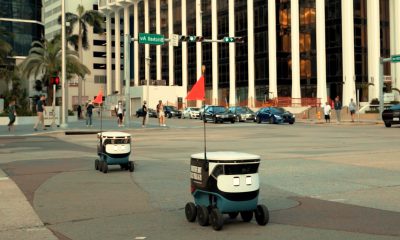

 AI1 year ago
AI1 year agoUber replaces human drivers with robots
-

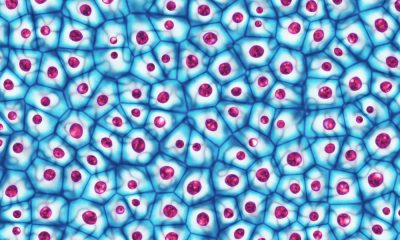

 Humans1 year ago
Humans1 year agoCell Rover analyzes the inside of cells without destroying them
-



 Technology11 months ago
Technology11 months agoThe best photography cameras 2023, buying guide and price
-



 Technology11 months ago
Technology11 months agoHow to prevent automatic download of applications on Samsung phones
